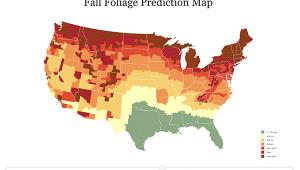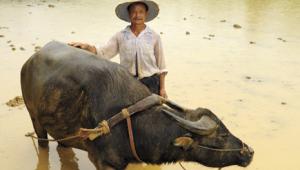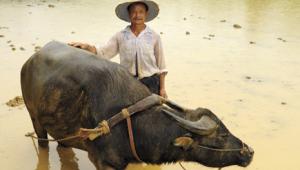The Waterfalls Of Ohio; Seeking Out Secluded Landscapes Page 2
Finding waterfalls is generally easy. Look in books. Peruse park pamphlets. Google “waterfall” and your geographic location. Contact Geological Survey offices. Or, do it the old-fashioned way: hike along suspicious creeks until you find one. Lastly, do not forget to chat it up with other waterfall enthusiasts. Once you start tracking down waterfalls, you will be amazed at how many you can find. My home state of Ohio has over 500 waterfalls!
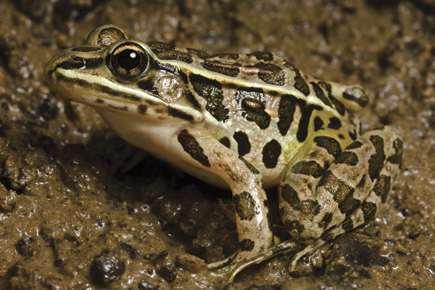 |
|
|
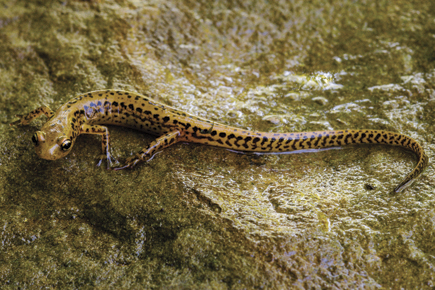 |
|
|
Once you have found a plenitude of picturesque plunges, you must consider seasons. Spring, with its good water flow rates, is the best time, but assembling a book with page after page of bright green trees and beautiful water flow can get repetitive. Summer usually has less water flow, but heavy rains can create interesting flood conditions. In the winter, shoot in the sun for south-facing exposures. And use fall foliage in the foreground or background for dramatic effects. The majority of waterfalls look best when shot with slow shutter speeds, making them look silky smooth, but too many creamy cascades in one collection will get boring. In assembling a body of work, think variation.
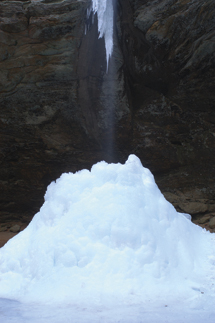 |
|
|
Tips For Photographing Waterfalls
• Shoot in varying light. Bright sun with blue sky is great for snowy shots and stopping motion; overcast is what I use for the majority of locations, especially for wooded landscapes where harsh shadows make contrast a problem.
• Try different shutter speeds. Anywhere between 1⁄4 sec to 2 seconds will create a creamy look. High shutter speeds, such as 1⁄500 sec or above, will freeze the water, something the human eye cannot perceive. Once you find the shutter speed that works best, shoot 10 or 20 images at this setting. Water changes its flow and splashing patterns from frame to frame.
• Shoot waterfalls in raw due to the brightness of water. Highlights may burn out in JPEGs but can often be recovered in processing raw files.
• Use ND (Neutral Density) filters for slow shutter speeds in bright light, especially if your camera’s lowest ISO is 200. I carry one B+W 0.6 (two stop) filter and one 0.9 (three stop) filter—which can be stacked—along with a range of step-up rings for all my lenses.
• For sun situations, pack a polarizer. In addition, try using HDR technology. It would seem that flowing water, which changes from frame to frame, would make this impossible, but fairly long shutter speeds (remember, achieved by stacking ND filters, even onto your polarizing filter) will blur the water. The “overlaying” that occurs in HDR images can end up having that “silky smooth” appearance. Experiment: HDR will work for some scenes and not for others.
• Tripods are a must for waterfall photography, especially for long exposures. While any tripod is better than no tripod, I prefer ones that allow you to shoot from nearly any position. I use a Gitzo Explorer G2228 (updated to the GT2541EX), namely because the legs lock in any position, they spread out for ground-level use, and the center column swivels and tilts. Carbon fiber reduces weight for long hikes and dampens camera shake much more efficiently than aluminum. I prefer a substantial ball head with a quick-release system. I use the Manfrotto Proball 468RC.
• Vary focal lengths. Bring viewers intimately close using wide-angle (24-35mm), super wide-angle (14-20mm), and even fisheye lenses with the water close-at-hand. Hike a short distance away and shoot with normal (50mm) to medium telephoto (70-135mm) lenses. Some waterfalls that are out in the open, like those on mountain sides, can be dramatically compressed with long telephotos (200mm and up).
• Vary your camera orientation. Vertical (portrait) compositions suggest strength while horizontal (landscape) framing implies placidity. Squares convey a sense of wholeness.
• Whatever the time of year, consider the weather. Although rain increases water flow, right after heavy storms creeks and rivers can turn brown and ugly. Color variations are good, but remember, most viewers prefer water that looks clear or white.
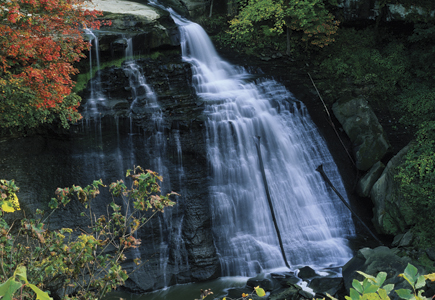 |
|
|
David FitzSimmons is a photographer, writer, and university professor. One of five Sigma Pros in North America, FitzSimmons has landscape images appearing on post cards, calendars by industry-leaders BrownTrout and Barnes & Noble, and in numerous magazines. You can see more of his work—landscape, portrait, and commercial images—as well as find out more about digital slide programs and workshops at: www.fitzsimmonsphotography.com.
- Log in or register to post comments
